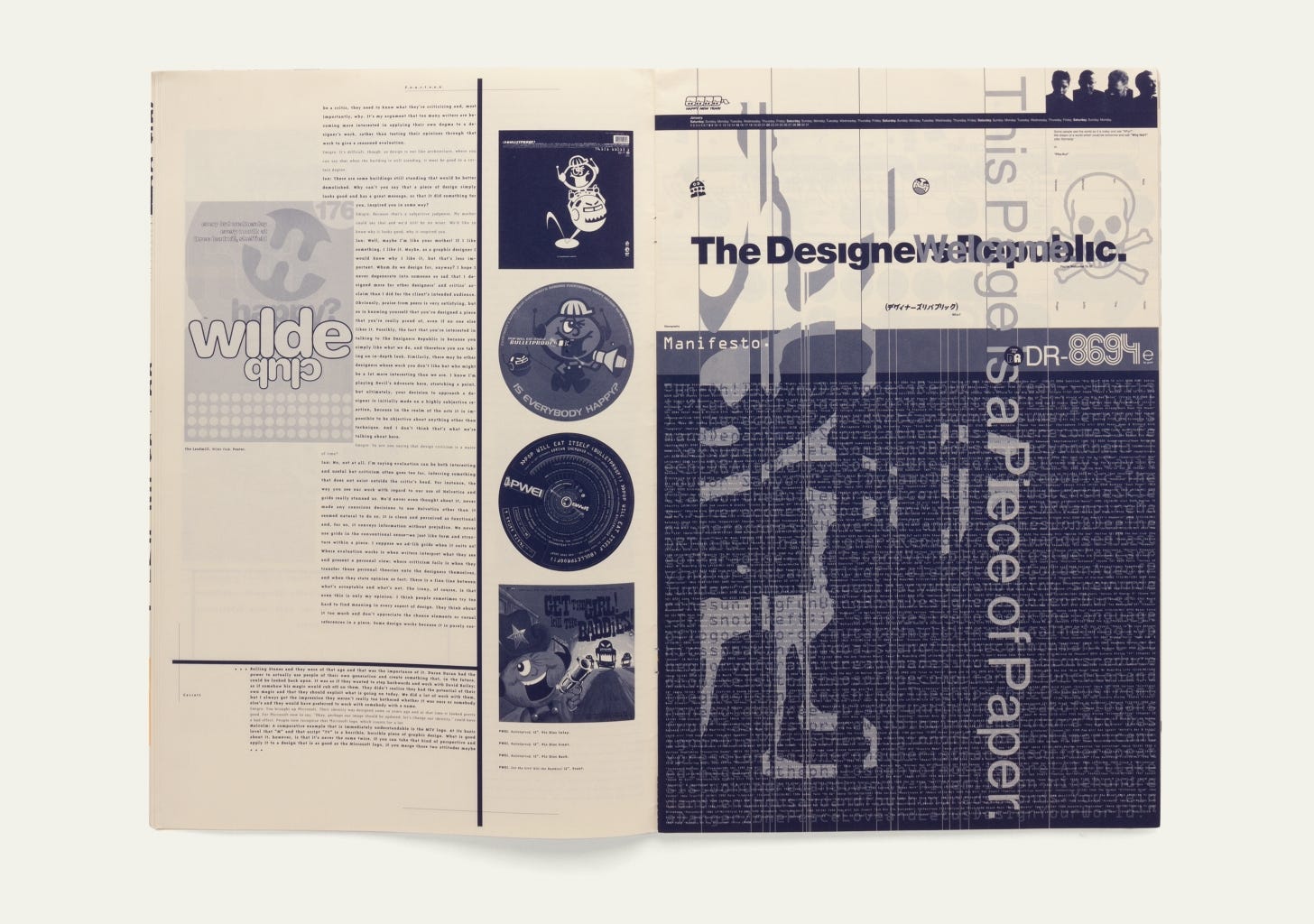tDR
Work Buy Consume Die
This week on Herb Sundays, Sam Valenti showcases Ian Anderson, the visionary leader behind the Designers Republic (tDR), in a conversation that resonates with my journey. My college years were spent at the University of North Texas, pursuing a BS in visual communication (graphic design) and fine art. The curriculum there paved the way for a conventional corporate path in design, adhering to traditional norms.
While immersed in academics, I was simultaneously navigating DJing warehouse parties at least 3 times a week in Dallas in the early 90’s. The juxtaposition of my formal education and staying out until 5am was quite the experience. My collection contained artists like Orb, LFO, Aphex Twin, and the selection process was often dictated by album covers or labels. Among them, Warp stood out with its captivating visuals and extraordinary music.
The tipping point arrived when my DJ career began to overshadow my academic pursuits, leading me to drop out with a few credits left. During this transition, the latest issue of Emigre hit the shelves, coincidentally displayed in one of my teacher's office windows. I recognized the ‘language’ and asked to take a look, and in that moment, I discovered a direct link between my passions and my aspirations. Design, which was quite serious at the time, posed a challenge in merging the creative paths of fine art and design.
Enter the Designers Republic, echoing the anti-design sentiments akin to David Carson in the United States. They were a rebellious figure reminiscent of Wolfgang Weingart, to rescue us from the clutches of a corporate death spiral. The Designers Republic encouraged me that there could be life beyond the confines of conventional design. Notably, their rise to fame coincided with the emergence of the internet, marking a transformative era in design. They were there to lead a lot of people into a new paradigm and their fame mirrored that notion.
That era defies description; no book can ever capture its essence. It mirrored the liberating spirit of an illegal warehouse party, where unconventional venues surfaced through whispers, boasting remarkable DIY aesthetics. There were no preconceived notions, no established history—just an unconventional gathering of free-spirited individuals immersed in the ethos of PLUR. The atmosphere was unpredictable, filled with wild characters, and the constant anticipation of a potential shutdown/sordid future, or at least difficult access, added to the thrill. It was a playful experience that transcended expectations, much like the indescribable magic embodied by tDR.
___
One of the people I met back in those days was Harsh Patel and he has a new site. I consider him one of the best.
I continue to write about creative tools (physical, mental and hybrid) in my free time. I don’t have a direction but a strong guttural lead.




I was also excited and emboldened by the design spirit of tDR, Warp, Ninja Tune, etc. and the subculture clashing postmodern visuals of zines, magazines, and the early web colliding. It felt like a fertile time across many “underground” media.
"That era defies description; no book can ever capture its essence." So true. As someone who was just starting their design career in the late 90s and early 00s – and a frequent lurker on the tDR design forum for inspiration – I'm still so grateful for this vibrant period of time in design history. Diving into this article – and an abundance of nostalgia, no doubt – right now. Thank you!